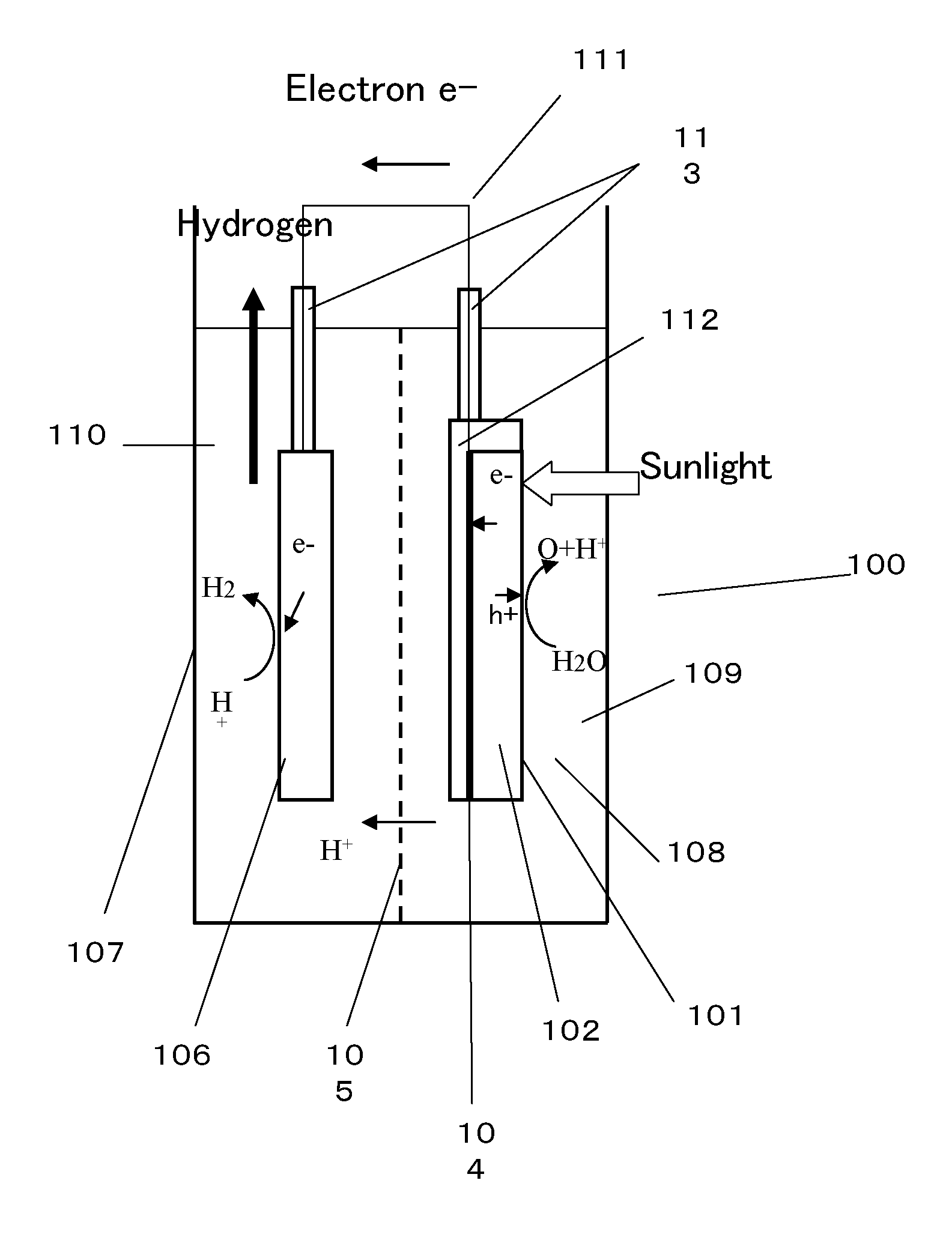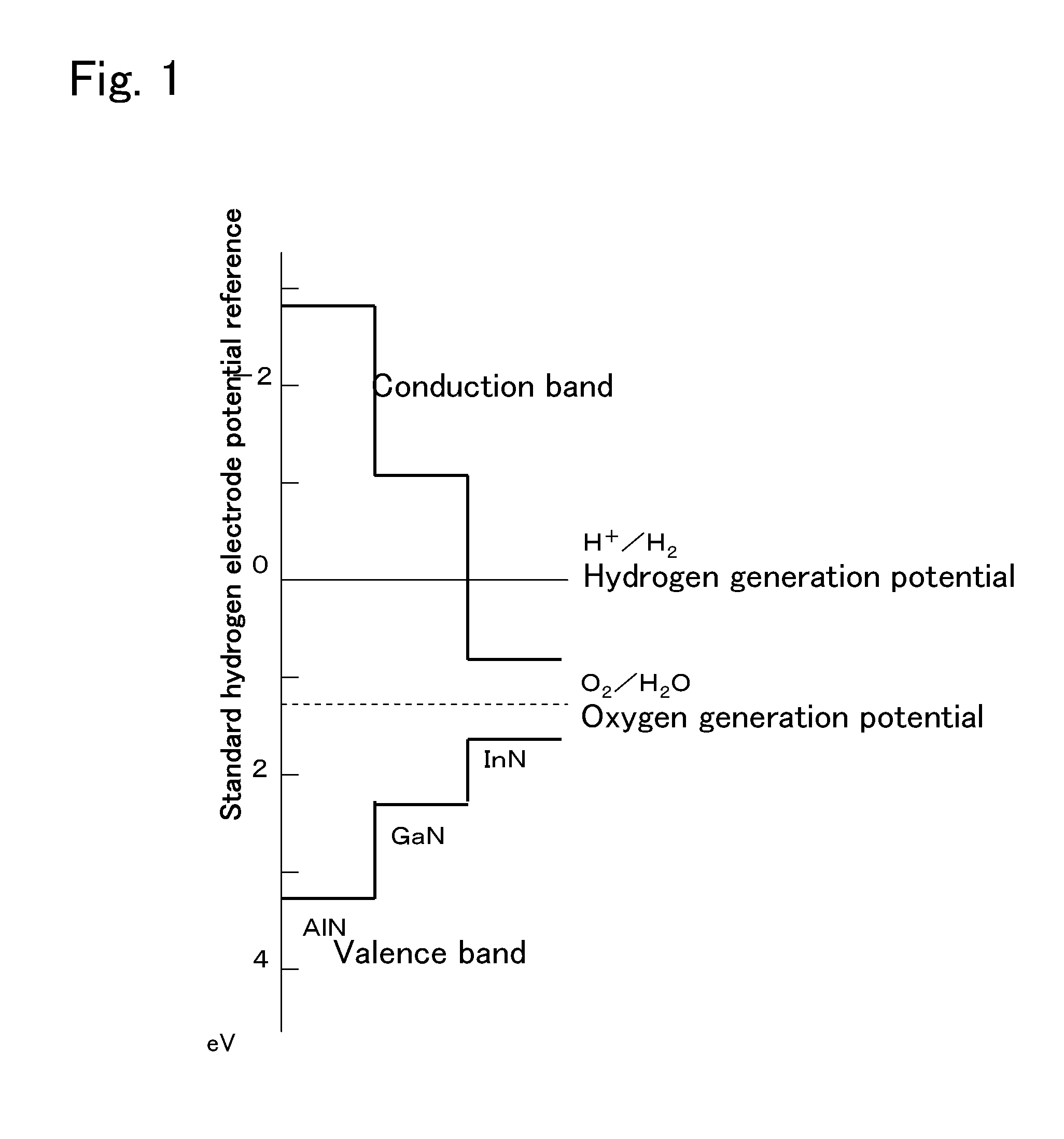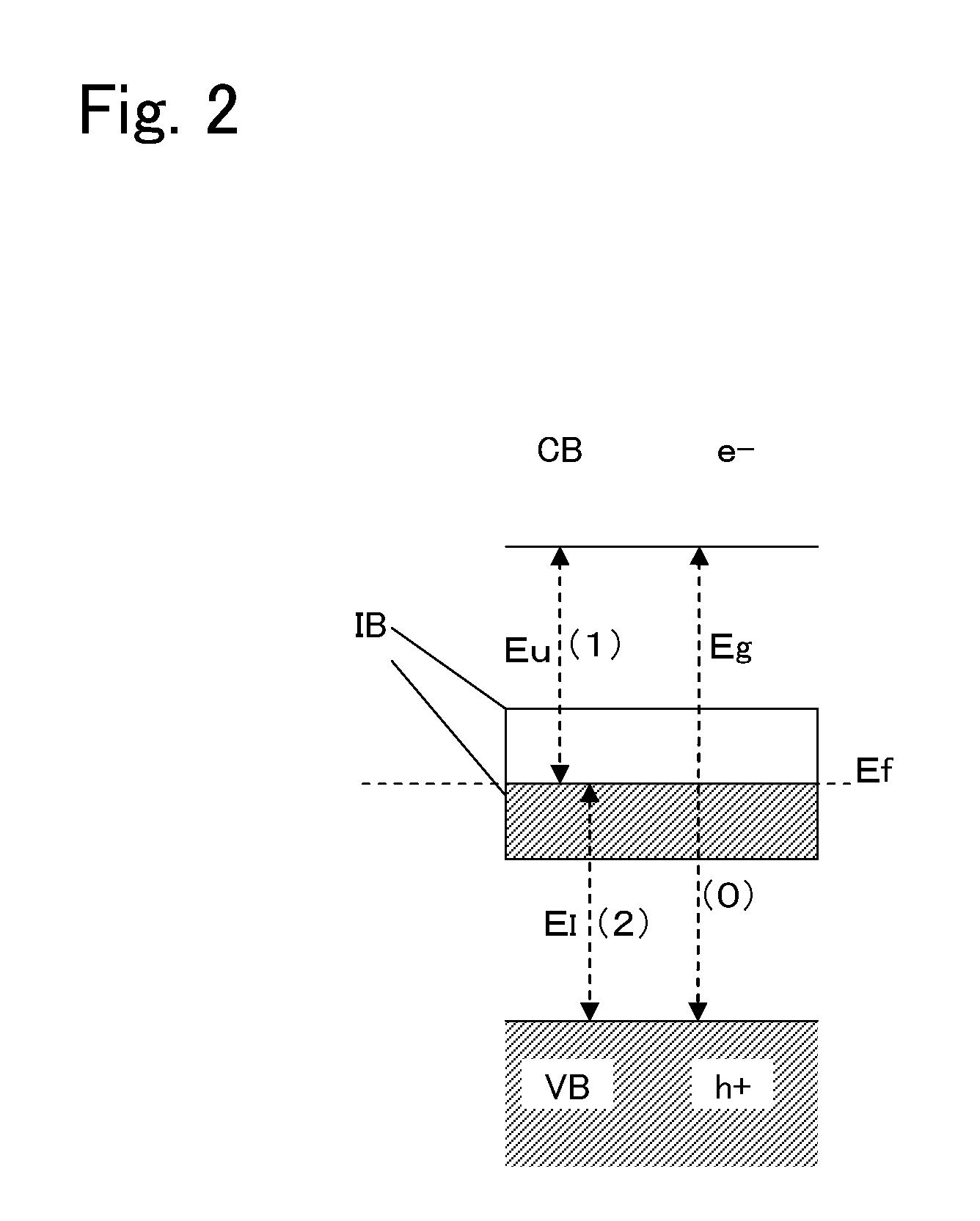Photocatalyst material and photocatalyst device
a photocatalyst and material technology, applied in the field of photocatalyst materials and photocatalyst devices, can solve the problems of low hydrogen generation efficiency, poor sunlight use efficiency, and material itself moltenness, and achieve the effects of enhancing photocatalyst efficiency and hydrogen generation efficiency, and reducing the number of molten materials
- Summary
- Abstract
- Description
- Claims
- Application Information
AI Technical Summary
Benefits of technology
Problems solved by technology
Method used
Image
Examples
first embodiment
[0091]FIG. 2 is a schematic view illustrating an example of a band structure of GaMnN of the present invention. In FIG. 2, symbol VB denotes a valence band; CB, a conduction band; IB, an intermediate band formed of an impurity band; Eg, a band gap of GaMnN; Ef, a Fermi level; Eg, a band gap between the impurity band and the conduction band; and El, a band gap between the valence band and the impurity band. Here, even when the intermediate band is present, the band gap Eg of GaMnN is the same as a band gap of GaN without Mn added thereto. By radiation of sunlight to GaMnN, three types of excitations occur as follows: electrons e− are directly excited by ultraviolet rays from the valence band VB to the conduction band CB (represented by (0) in FIG. 2); electrons e− are excited by visible rays and infrared rays from the valence band VB to an unoccupied portion of the impurity band IB through the intermediate band IB (represented by (2) in FIG. 2); and electrons e− are excited from the ...
second embodiment
[0096]FIG. 4 is a schematic view illustrating an example of a band structure which is a laminated structure of p-GaN / GaMnN. In FIG. 4, symbol 211 denotes a p-GaN layer; 212, a GaMnN layer; VB, a valence band; CB, a conduction band; IB, an intermediate band formed of an impurity band; Eg, a band gap of GaMnN; Ef, a Fermi level; Eu, a band gap between the impurity band and the conduction band; and El, a band gap between the valence band and the impurity band. FIG. 4 illustrates that, by radiation of light to the GaMnN layer 212, electrons e− are directly excited from the valence band to the conduction band (0); electrons are excited from the valence band to an unoccupied portion of the impurity band through the impurity band (2); and electrons are excited from an occupied portion of the impurity band to the conduction band (1). The excited electrons e− are blocked by the p-GaN layer 211 and stay in the GaMnN layer 212, and the holes h+ move to the p-GaN layer 211, with the result that...
third embodiment
[0099]FIG. 6 is a schematic view illustrating a structure of a photocatalyst device 300 using, as a cathode, the photocatalyst material having the laminated structure of p-GaN / GaMnN illustrated in FIG. 4. A water tank 307 is filled with pure water or an electrolyte aqueous solution 308 and divided into a cathode chamber 309 and an anode chamber 310 by an ion exchange membrane 305. A platinum plate is placed as an anode 306 in the anode chamber 310, and a cathode 301 is placed in the cathode chamber 309. The cathode 301 has a structure in which a GaMnN layer 302 is laminated on one principal surface of a p-GaN layer 303, and a charge extracting electrode 304 is formed on the other principal surface of the p-GaN layer 303. The charge extracting electrode 304 is coated with a waterproof insulating film 312 so as not to come into direct contact with the electrolyte aqueous solution 308. Numeral 313 denotes waterproof insulating tubes for preventing a conductive wire 311 from coming into...
PUM
| Property | Measurement | Unit |
|---|---|---|
| Nanoscale particle size | aaaaa | aaaaa |
| Nanoscale particle size | aaaaa | aaaaa |
| Semiconductor properties | aaaaa | aaaaa |
Abstract
Description
Claims
Application Information
 Login to View More
Login to View More - R&D
- Intellectual Property
- Life Sciences
- Materials
- Tech Scout
- Unparalleled Data Quality
- Higher Quality Content
- 60% Fewer Hallucinations
Browse by: Latest US Patents, China's latest patents, Technical Efficacy Thesaurus, Application Domain, Technology Topic, Popular Technical Reports.
© 2025 PatSnap. All rights reserved.Legal|Privacy policy|Modern Slavery Act Transparency Statement|Sitemap|About US| Contact US: help@patsnap.com



